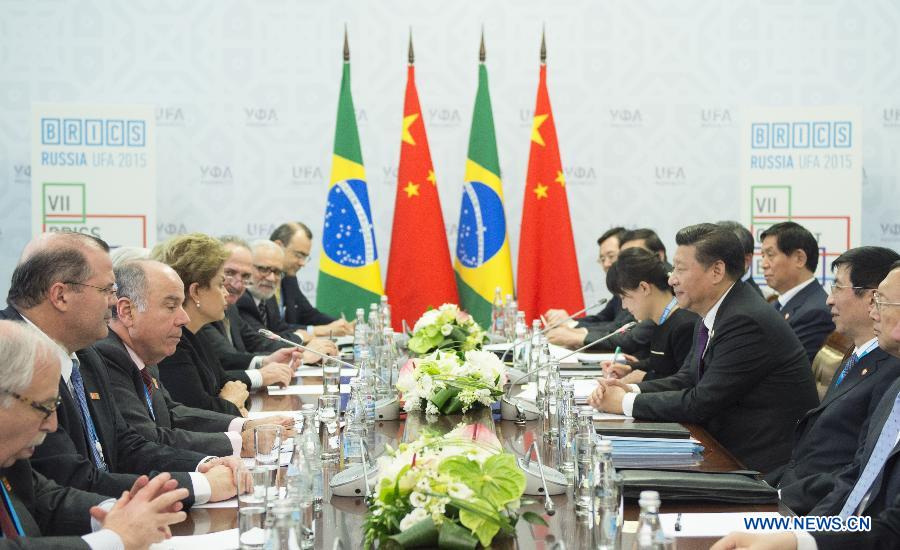
Brazil, like China, is a country with a vast territory whose energy consumption centers are far from where the resources are located.
In order to transmit electricity from hydropower stations in the Amazon region in the north to the consumption centers like southern states Sao Paulo and Rio de Janeiro, the Brazilian government in 2013 decided to use the UHV technology, which can transmit a large capacity of electricity over long distances with low loss.
Chinese technology, which has been tested in operations for years, therefore became the best choice for Brazil.
In February 2014, a consortium formed by State Grid Brazil Holding and two Brazilian companies won the first bid to build and operate a 2084-km transmission line connecting the Belo Monte hydropower plant to the southern state of Minas Gerais near Sao Paulo and converter stations. Last month, State Grid Brazil Holding won the second bid to build a 2,250-km transmission linking the Belo Monte power plant to the town of Nova Iguacu near Rio de Janeiro.
The constructions are expected to be finished in four years and State Grid Brazil will maintain the concession for 30 years.
Brazil’s hydropower potential ranks third in the world, following Russia and China. Almost 80 percent of the energy consumed in the country originates from hydroplants.
The Belo Monte hydroelectric dam, expected to be completed by January 2019 with a designed capacity of 11,233 megawatts, will be the third largest in the world behind the Three Gorges Dam in China and the Brazilian-Paraguayan Itaipu Dam. The dam and UHV transmission projects, if completed, will greatly power the development of energy-hungry southern areas.
Electrobras has the only lab in the southern hemisphere to test the UHV AC and DC equipment. Building UHV lines will not only secure Brazil’s leading position in the hemisphere, but also help Brazil take the lead in electrical technologies in the world, Costa said.
WIN-WIN PROJECTS
Introducing UHV DC technology from China to Brazil will bring revolutionary changes to north-to-south electricity transmission projects. The two transmission projects, with a total investment of 15 billion reais (4.7 billion U.S. dollars), are expected to create around 34,800 jobs in Brazil, according to estimates of the Brazilian government.
“Those projects will yield win-win results,” said Zhang Jianping, an expert at the Academy of Macroeconomic Research of China’s National Development and Reform Commission.
In addition, the projects will create a huge demand for electricity equipment and steel and push Brazil to update its power infrastructure.
To China, those two transmission lines brought breakthroughs to the overseas development of its UHV technologies. Given the weak export growth, those projects will serve as a window for the world to see China’s advanced technology and production capability. Those can be new growth points in foreign trade for China, Zhang said.
“In addition to the high-speed rails and nuclear power plants, the UHV transmission technologies can be the third flagship product of China’s advanced technology and equipment,” Zhang said.